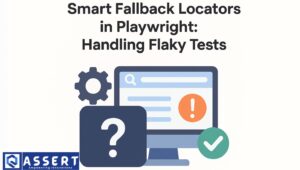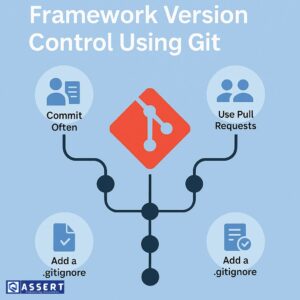The world of test automation is changing fast. With applications becoming smarter and more complex, testers are now looking for ways to make their frameworks smarter too.
That’s where integrating AI in test frameworks comes in.
AI (Artificial Intelligence) helps your framework learn, adapt, and make better decisions — reducing test maintenance and improving accuracy.
In this blog, you’ll learn how to add AI features to your existing test automation framework step by step.
What Does Integrating AI in Test Framework Mean?
When you integrate AI into your framework, it means you’re using machine learning or AI-based algorithms to improve test reliability.
For example:
-
If a button’s locator changes, AI can automatically find a similar element.
-
AI can detect patterns in test failures and suggest fixes.
-
It can analyze screenshots to check UI differences automatically.
This type of AI test automation makes frameworks self-healing, faster, and smarter over time.
Why Integrate AI Features?
There are many reasons why AI in testing has become popular:
✅ 1. Reduces Flaky Tests
Flaky tests happen when locators change or the app behaves differently across environments.
AI can intelligently identify elements even if their locators change, using image recognition or natural language clues.
✅ 2. Improves Test Maintenance
Instead of manually updating broken locators, AI-powered systems can repair them automatically.
This saves a lot of time in large projects.
✅ 3. Boosts Accuracy
AI can detect subtle UI or performance changes that manual scripts often miss.
For example, tools like Applitools use visual AI to verify changes in screen layouts.
✅ 4. Enables Predictive Testing
By analyzing past data, AI can predict which areas are likely to fail.
This helps testers focus their efforts on high-risk areas.
AI Features You Can Add to Your Framework
Let’s look at the most common AI features that can be integrated into any existing test framework.
1. Self-Healing Locators
AI can automatically find new locators if old ones break.
For instance, you can integrate OpenAI or Testim’s AI API into your catch blocks to suggest alternate locators when an element is not found.
Example:
try {
driver.findElement(By.id(“loginBtn”)).click();
} catch (NoSuchElementException e) {
String aiSuggestedLocator = OpenAIHelper.getLocatorSuggestion(“Login Button”);
driver.findElement(By.xpath(aiSuggestedLocator)).click();
}
This makes your AI-powered test framework self-healing and less prone to failures.
2. AI-Based Visual Testing
Tools like Applitools Eyes use computer vision to compare screenshots automatically.
You can integrate it with Selenium, Playwright, or Appium to check UI changes.
Example:
eyes.open(driver, “My App”, “Login Test”);
eyes.checkWindow(“Login Page”);
eyes.closeAsync();
This helps detect visual bugs that functional tests can’t catch.
3. Smart Test Prioritization
AI can analyze historical test results and determine which tests are most important to run first.
For example, if certain modules fail often, AI will prioritize those tests.
This reduces execution time and makes regression runs more efficient.
4. Natural Language Test Generation
Modern tools like Testim or ChatGPT-based assistants can generate test cases automatically using natural language input.
You can type a sentence like:
“Verify user can log in using valid credentials.”
And the tool generates test code or Cucumber steps automatically.
This makes AI in testing accessible even to non-coders.
How to Start Integrating AI in Your Framework
Follow these simple steps to integrate AI gradually:
-
Start Small:
Add one AI feature (like self-healing locators). Don’t try to replace everything at once. -
Choose the Right Tool:
Based on your tech stack, you can try:-
Testim.io – AI-based locator healing
-
Applitools – Visual testing
-
OpenAI API – For custom AI logic
-
-
Integrate with Reporting:
Update your report (like Extent or Allure) to log AI decisions and suggestions. -
Monitor and Learn:
Track which AI actions improve accuracy and fine-tune your configurations.
Example Architecture for AI-Enhanced Framework
Here’s what your updated folder structure might look like:
src/
├── main/java/
│ ├── base/
│ │ └── DriverFactory.java
│ ├── ai/
│ │ ├── SelfHealingEngine.java
│ │ └── OpenAIHelper.java
│ ├── reports/
│ │ └── ExtentReportManager.java
│ ├── utils/
│ │ └── ScreenshotUtils.java
│ └── pages/
│ └── LoginPage.java
├── test/java/
│ └── tests/
│ └── LoginTest.java
This structure keeps the AI logic separate, making it easy to maintain and expand later.
Conclusion
Integrating AI in your test framework is not just a trend — it’s the future of testing.
AI features make your framework more intelligent, reduce manual work, and help identify issues faster.
By starting small — like adding self-healing locators or visual validation — you can make your automation smarter step by step.
Soon, you’ll have a smart test framework that learns, adapts, and evolves with your application.




